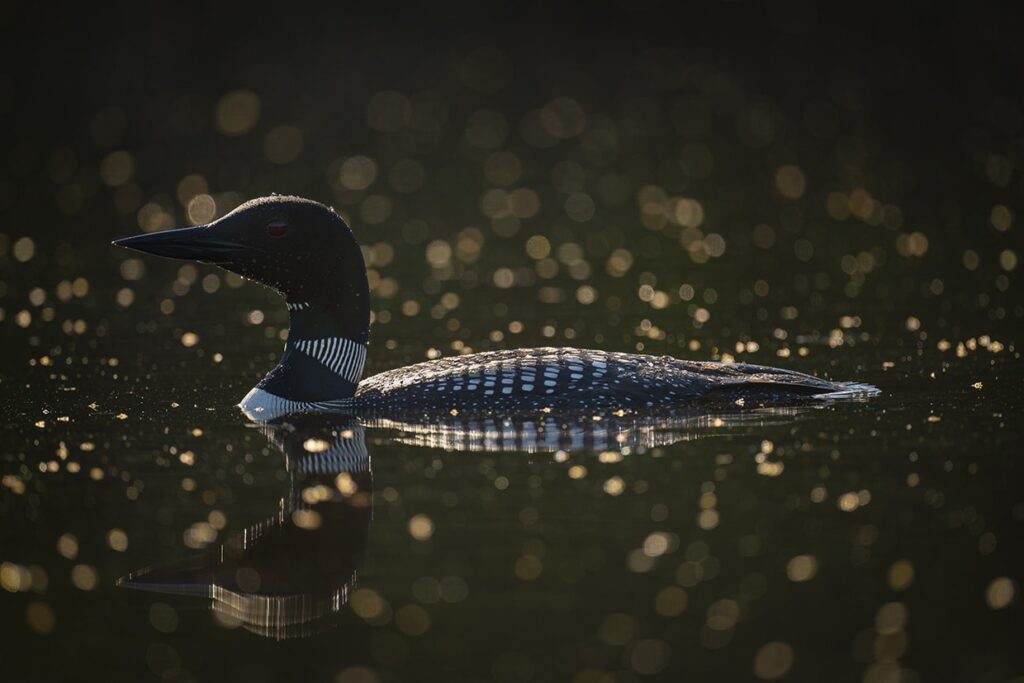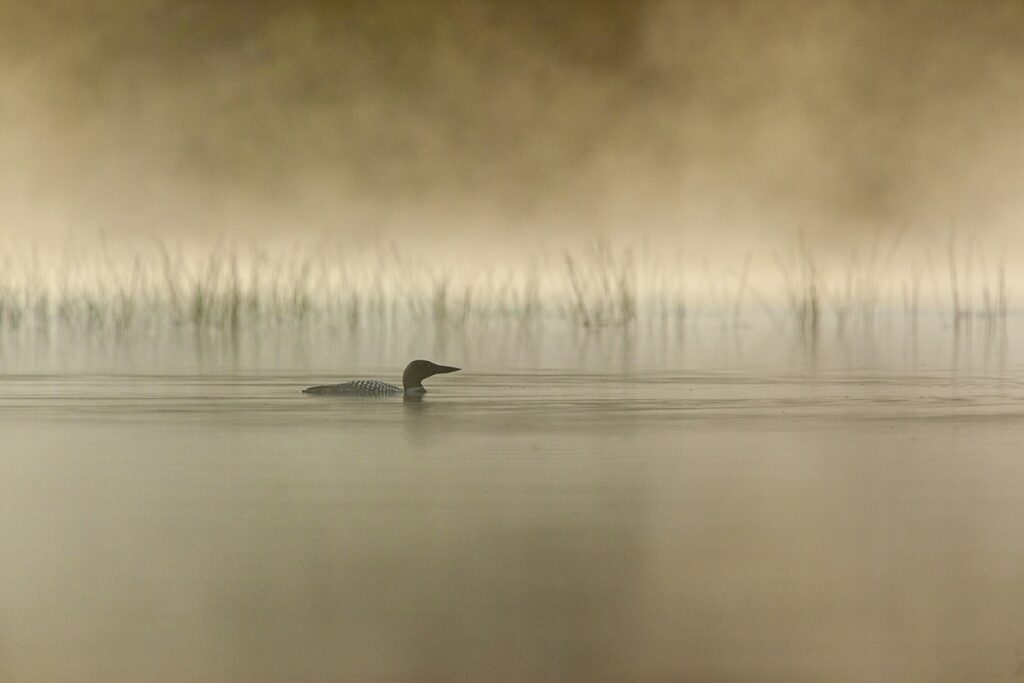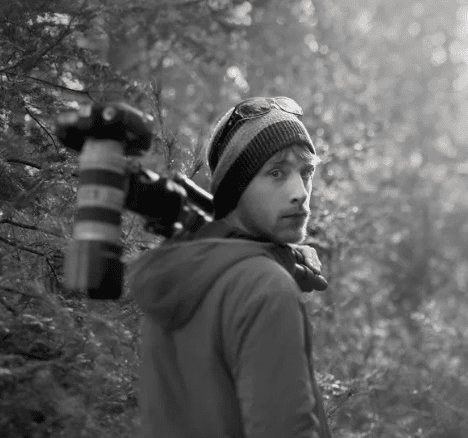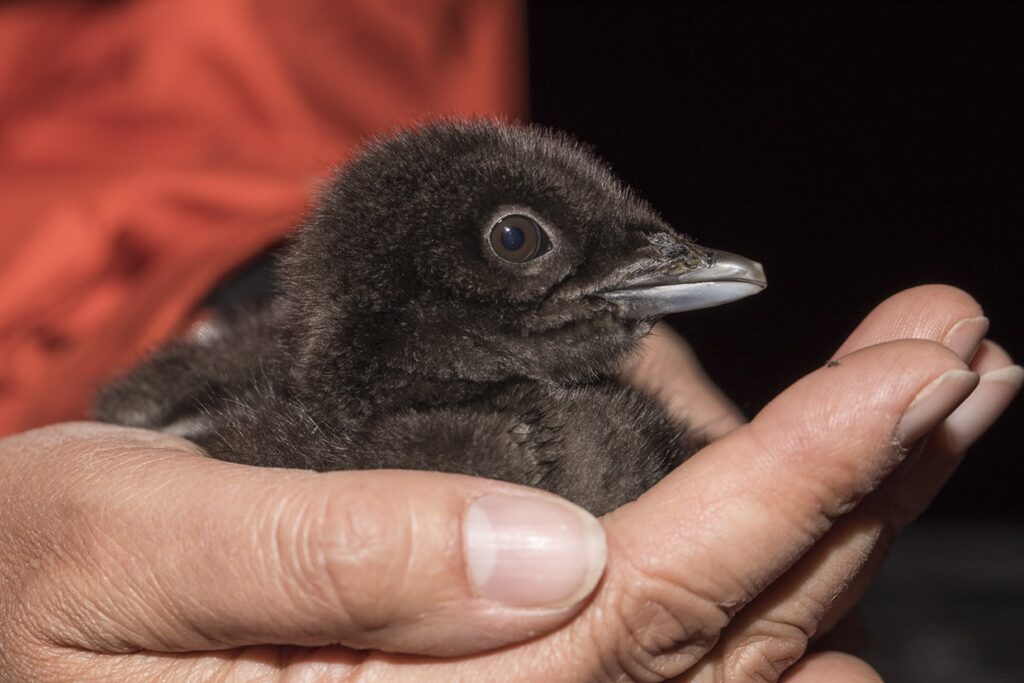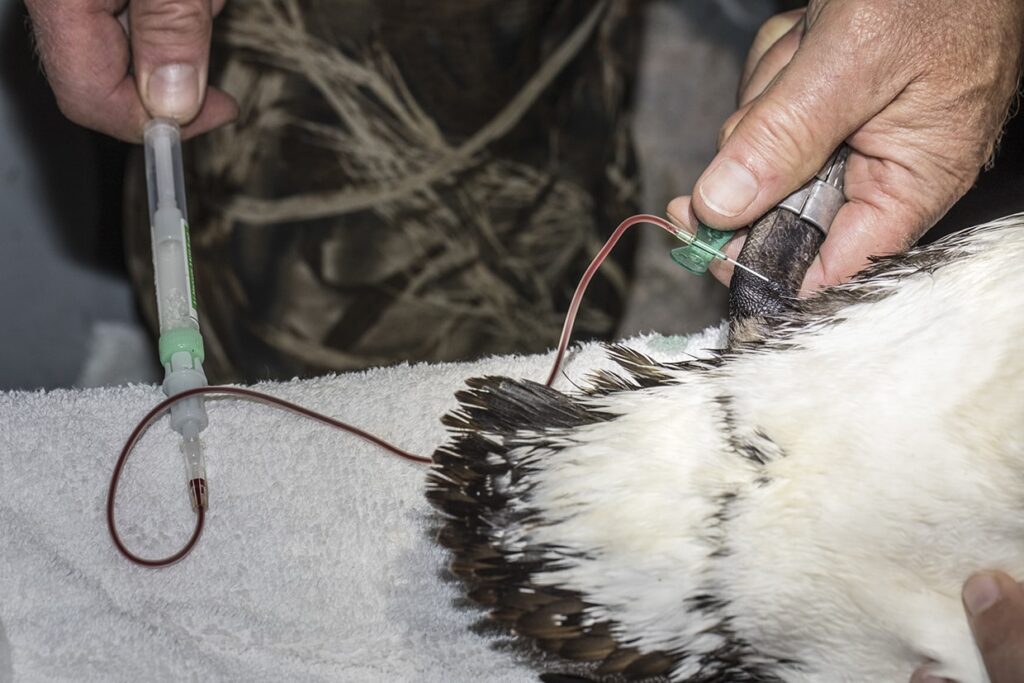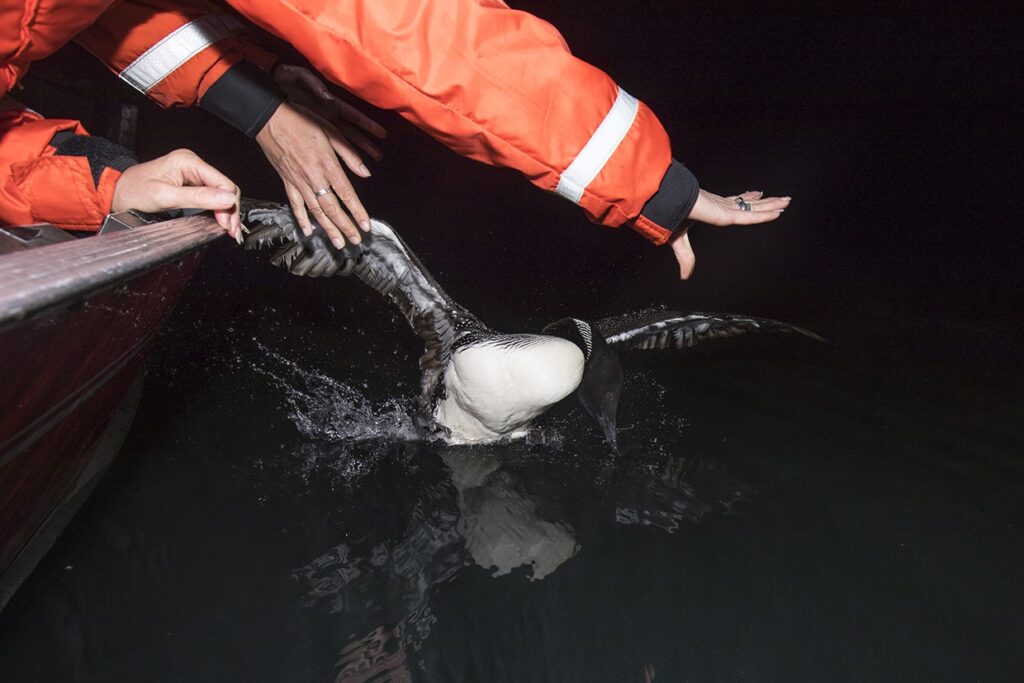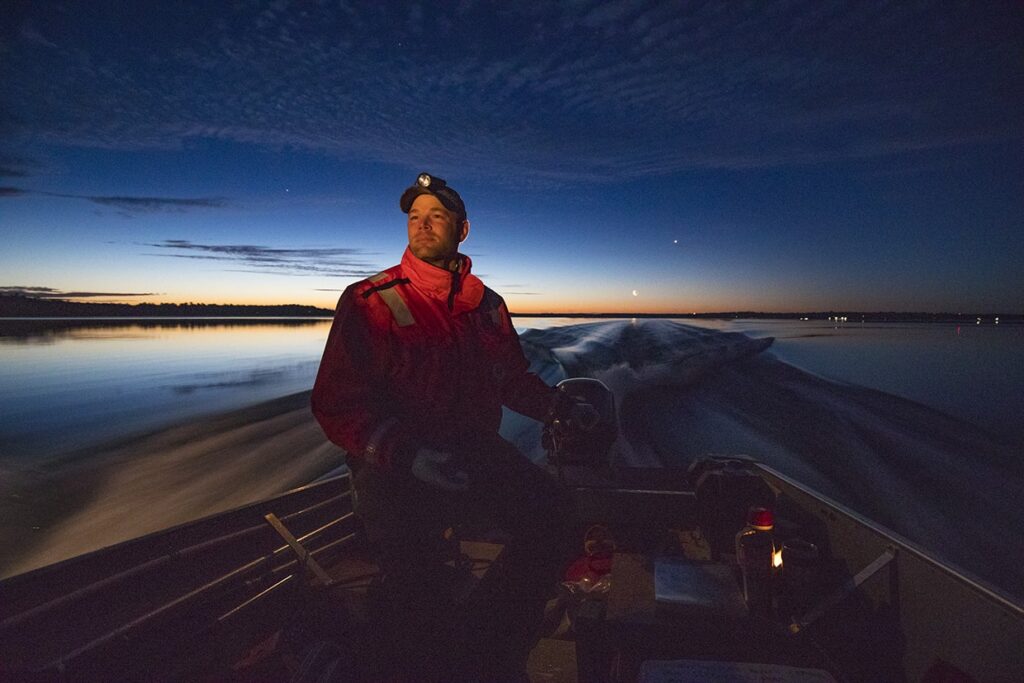As twilight descended and the fire settled to glowing embers, the stillness of the night was shattered by the unmistakable tremolo of the common loon. Within moments, loons from other territories and adjacent lakes began to respond, and the air came to life with the reverberating echo that all Minnesotans long to hear during the spring and summer months. Their distinct call is undeniably magical and a contribution to the essence of the Northwoods. My loon obsession runs deep and my love for our state bird is shared by many Minnesotans. What’s not to love? The black and white speckled plumage contrasted with red eyes, the harmonic songs that echo across the water, the effortless beauty and grace they exhibit underwater, or their unwavering devotion as parents; they’re hypnotically beautiful.
Like many in Minnesota, the loon has been a staple throughout my life, to the point that my appreciation and love for this icon wasn’t conscious and largely dismissed. It wasn’t until I began photographing these stunning birds that I began to understand how important they were to me, Minnesota, and the boreal forests. Throughout my time in the Boundary Waters I have had countless encounters with these birds – a lot of us have.
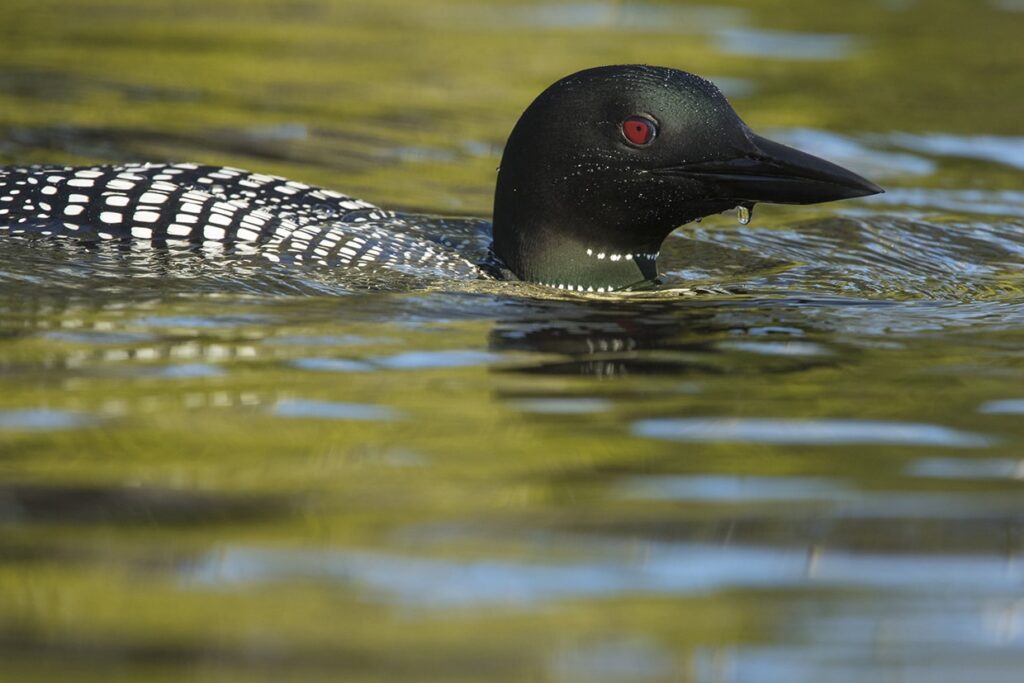
My fascination grew immensely during my first solo trip in 2009. I awoke before the sun, the lake graced with faint fog and a family loons off in the distance. I launched my canoe, each stroke disrupting the stillness of the water. I approached slowly, and indirectly, with hopes of gaining their trust as they fished in the faint glow of dawn. What happened next was a defining moment which solidified my love for them and the boreal ecosystem. The sun rose over the tree-line, setting the fog ablaze, and in this scene was one of the adult loons whom just emerged from the depths. I spent an hour paddling with the adults as they preened, fished and tenderly attended to their chick.
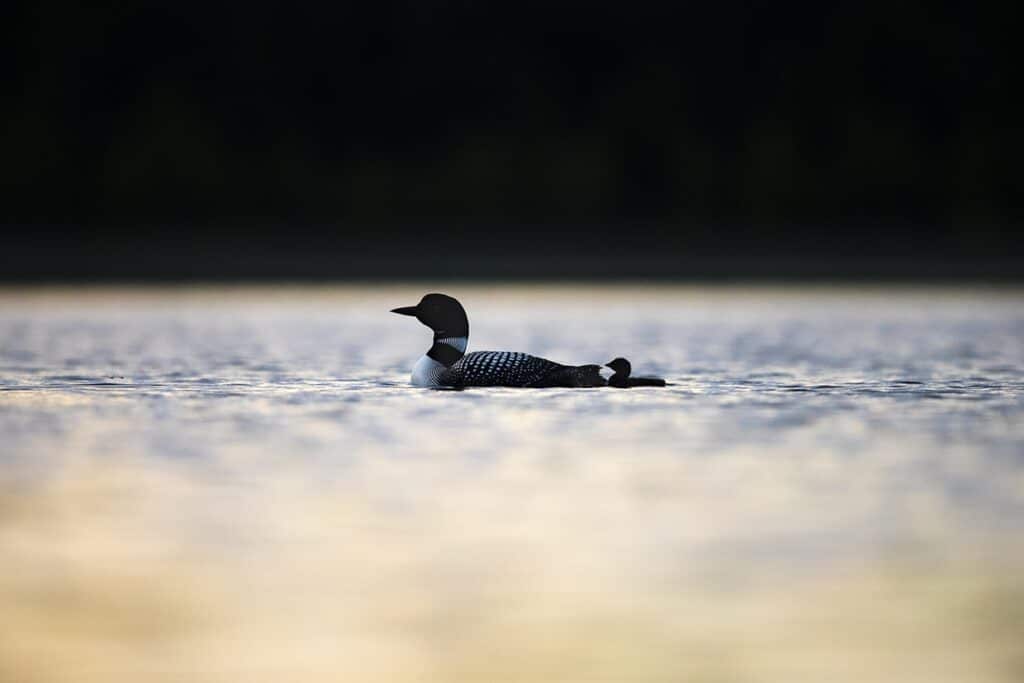
Over subsequent years I invested my spring months trying to locate nesting pairs, the perfect nest, and the perfect conditions that served these them justice. In the spring of 2018, I was notified of the highest density loon population in Minnesota, so I planned a trip aligned with nesting/chick season. After my first day on the water I had encountered 29 loons – eight mated pairs, four active nests, seven chicks, and six lone birds. This remarkable experience allowed me to witness behavior I had never seen before, including territorial disputes between pairs, feeding of chicks, egg rotation, and defensive cooperation between birds in opposing territories.
The last was the most fascinating to me. I approached behind a small peninsula to photograph a pair of loons with a single chick, out of sight from the family. I got into my floating blind and began my approach, an easy success given my prior experiences when well concealed. A third adult loon behind me began to use a distress call, I didn’t think much of it, and assumed an eagle had soared overhead. As I approached the family, one adult took the chick to the opposing shoreline, and one directly approached me, as the lone adult behind me began to call. It all clicked, and I realized that the lone loon that I didn’t notice, saw me get into my blind and was alerting the family of my presence. This cross-communication between families fascinated me and resulted in an inquiry to a loon biologist.
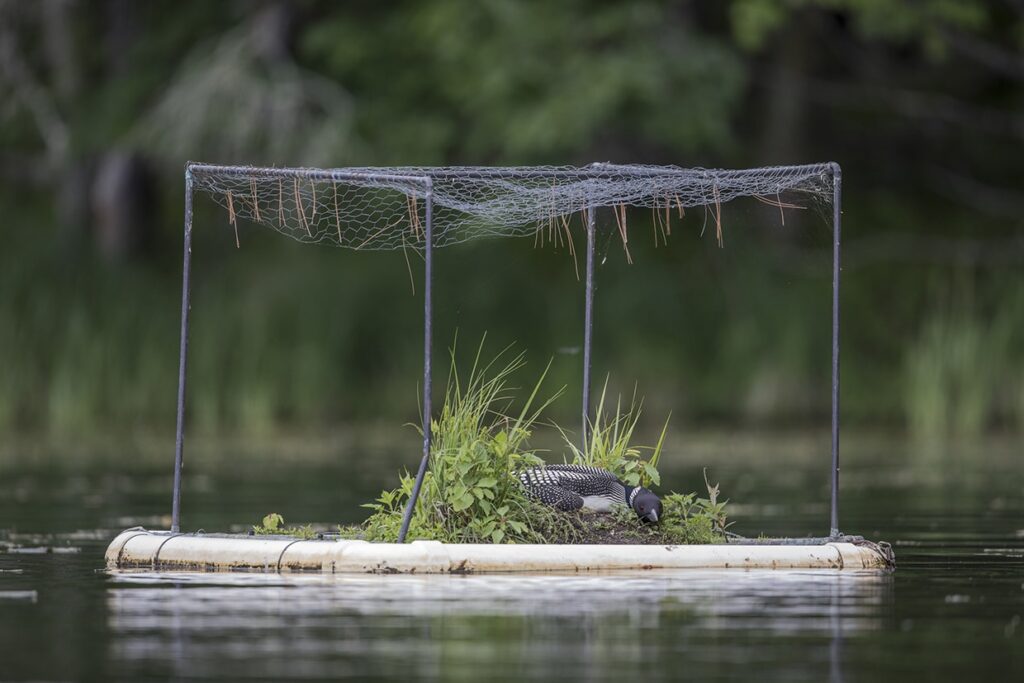
After contacting retired DNR bird specialist Carrol Henderson I was able to join an overnight trip in the Brainerd area to collect blood and tissue samples, and band multiple birds. I had no idea what I was in for. I arrived at the cabin at sunset with my coffee and camera equipment in hand. We boarded the boat as darkness descended, guided by a GPS and a spotlight scanning for loons. This was final field season in researching contamination from the Deepwater Horizon Oil Spill, and other threats ranging from climate change to toxic split-shot – which resulted in a huge settlement for Minnesota loons and conservation efforts for our state bird, a massive win given the damaging effects of the bioaccumulation of toxins found in the loons. What struck me most during this time wasn’t just the research, but the community efforts in this region to create artificial nesting habitat for these birds, especially given the increasing shoreline development. The devotion of lake property owners to help foster a healthy loon population in the midst of development is commendable. Personally, I still strive to locate and photograph only natural nesting sites. I believe this to be of importance because conserving natural habitat with emergent and submerged aquatic vegetation is crucial for all species dependent upon these ecosystems.
Our love for the boreal forests and lake country, while well-intended, has had undeniable impacts on loons. Facing shoreline development, the consequential increase in water pollution and loss of nesting habitat, the use of toxic lead fishing tackle, the contamination from the Deepwater Horizon oil spill, and climate change, the future of the loon is questionable.
In a report from the National Audubon Society, it is estimated that loons will no longer summer in Minnesota as soon as 2080 because of our rapidly changing climate. I truly believe that through telling the stories of species we know and love, we can give a voice for climate action. I know I would be devastated to not hear the song of the loon in Minnesota, and I have a feeling I wouldn’t be the only one.
